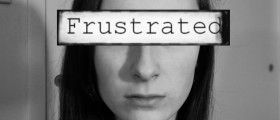
Phobias are unreasonable fears which are quite prominent in some people. Moreover, phobias can interfere in your life so strongly that your work and many other aspects of your life may be affected. Namely, each time you face the object of your phobia, you are bound to have panic and anxiety attacks triggered, sometimes making you incapable of moving or even talking. Also, memories from the past, when recalled can lead to these kinds of attacks, making people with phobias re-live all the negative feelings.
NLP vs Phobias
Neuro Linguistic Programming or, short, NLP is a special kind of therapy which has proven itself to be more that effective in treating phobias in people. Through learning about self-encouragement and positive motivation, people can overcome their phobias and manage to live without them. NLP helps them achieve this.
Dealing with Fear of Public Speaking
In order to explain how NLP works in preventing phobias, we will imagine an example patient named Mary. Basically, she suffers from fear of speaking in public places and speaking in public in general. Her fear stems from her childhood when she was supposed to present something to others but was not comfortable with it. The pressure being too great, she felt anxious and vomited. Today, whenever she faces a similar situation, she experiences similar symptoms. Yet, she is supposed to have a public speech in her company in a couple of weeks, so she searched for treatments for her problems since she did not want to re-live the same, negative scenario again.
The NLP therapy, after the necessary consultations with Mary, consisted of several parts. Firstly, she was exposed to a projection of the same situation as the one she has problems with. However, during this exposure, the otherwise scary and intimidating situation was made funny. Basically, she imagined her giving public speech as a black and white movie, in order to detach from it. Also, by looking at the movie, she took part in the whole situation as a third person, feeling less vulnerable.
The next part of the therapy involved Mary entering the imaginary cinema screen, taking part in the movie of her life, watching it backwards, as if on “rewind”. During this mental process, the therapist played some cartoon music in the background, making the whole phobia look funny and benign. This way, connections between public speaking and fear were lost.
At the end of the treatment, combined with hypnotherapy, Mary held her public speech brilliantly and overcame her phobia with NLP.
- www.nhs.uk/conditions/phobias/treatment/
- www.nhs.uk/conditions/phobias/
- Photo courtesy of Collin Harvey by Flickr: www.flickr.com/photos/49503134679@N01/1760408850/

















Your thoughts on this
Loading...